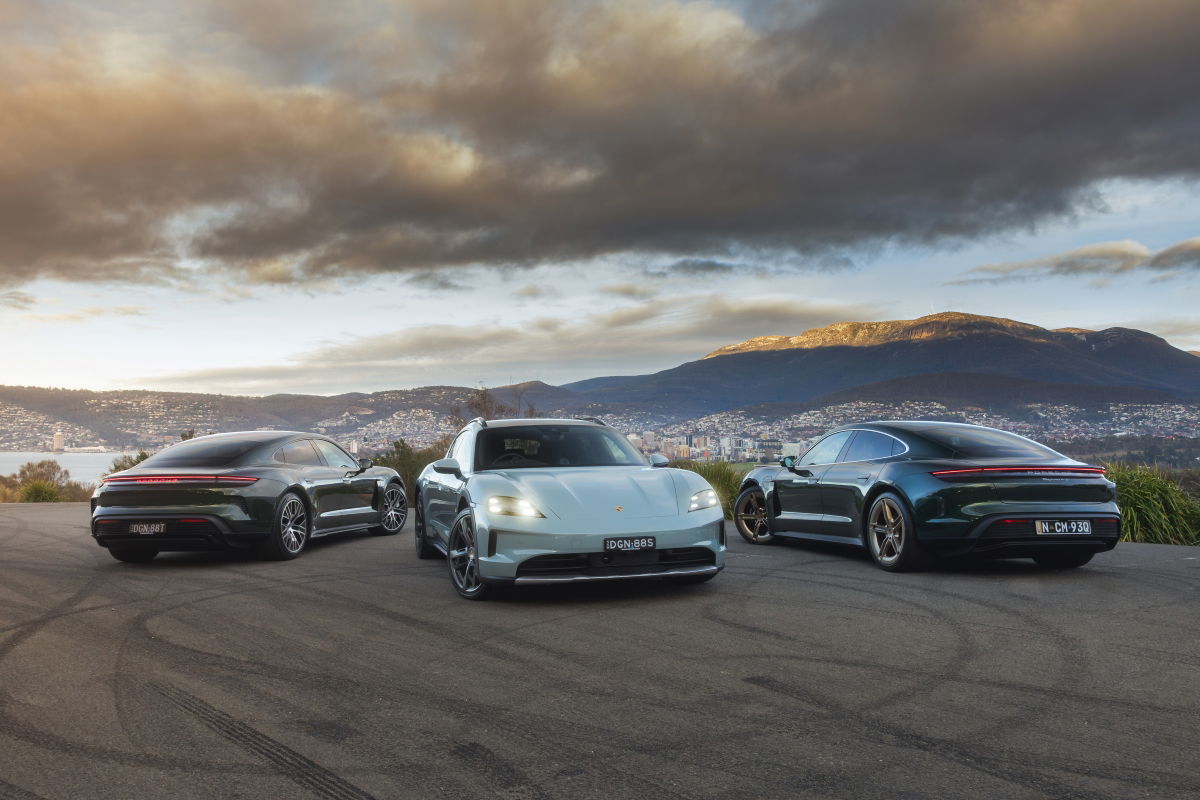
“Does anyone not want to do multiple acceleration runs,” asks Porsche chief driving instructor, Luke Youlden.
Without hesitation I raise my hand. Normally I’m all for as much track action as I can get, especially in a Porsche. The difference here is we’re talking about 0-100km/h acceleration runs in the updated Taycan electric sports sedan. I’ve been there and done that, repeatedly experiencing the violence, speed and consistency the Taycan possess. In the same way I don’t need to go a few rounds with Connor McGregor to know he’s got a punch that would break my face, I don’t need multiple runs in the Taycan to know it’s fast.
Scratch that, sickeningly fast. The reason I decline repeated acceleration runs is because I know, from experience, the repeated neck-snapping launches leave me feeling sick. I guess that means I can’t be a drag racer…
READ MORE: We Track Test the Porsche Taycan Turbo S
I know a lot of you will be anti-electric cars. They’re oversized golf carts that silently usher the death of the loud, powerful petrol-fueled engines that you love. For what it’s worth, I love the internal combustion engine too and I’ll be devastated when the last one rolls off the production line.
But that’s decades away, no matter what some people will try to convince you, and instead we find ourselves in the midst of a best-of-both-worlds situation with new EVs appearing to give driving enthusiasts a fresh alternative form of performance.
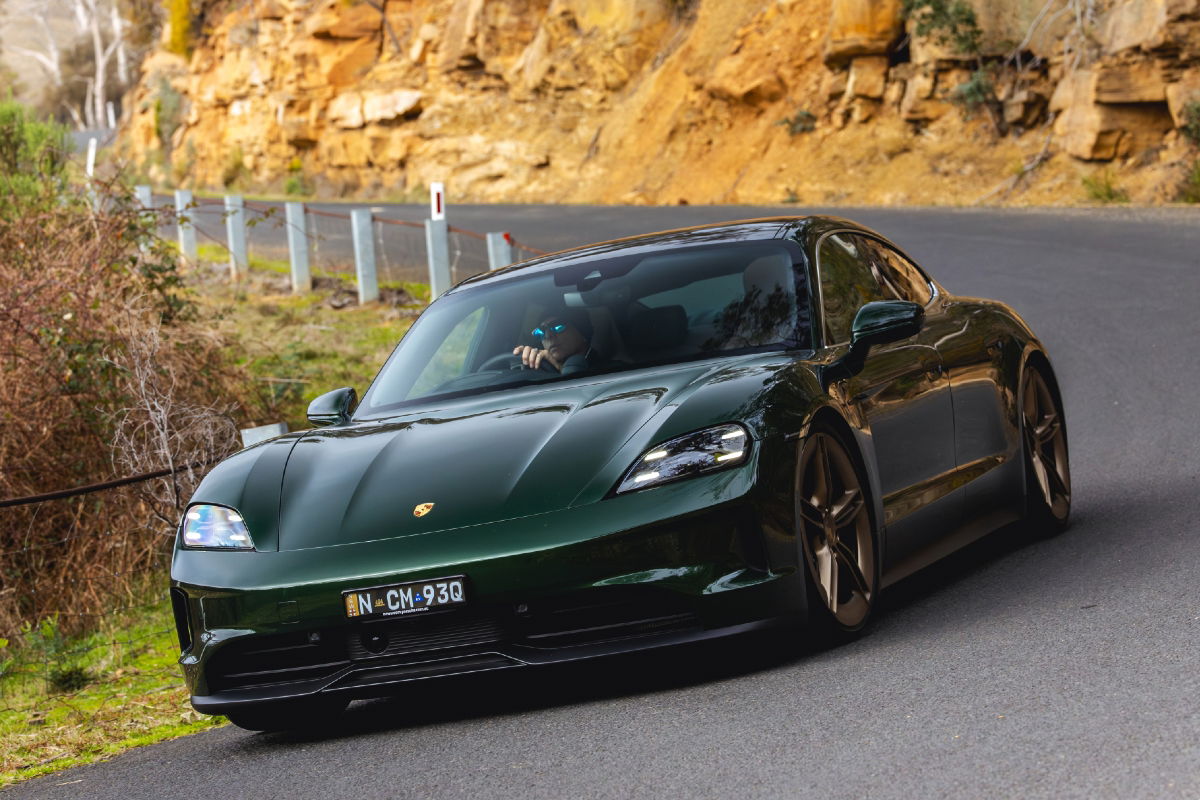
And make no mistake, the Porsche Taycan may have four doors, but this is a true performance car. We were with Youlden and the Porsche Australia team in Tasmania recently to drive the updated 2024 Taycan range, which features a raft of improvements to enhance its speed, range and comfort.
It’s been five years since Porsche revealed its first electric car, so the time was right for a freshen up. This new model features changes across the range including a restyled front end, new wheel designs and some key under-the-surface enhancements.
READ MORE: 2022 Porsche Taycan Corss Turismo review
Porsche spent 25 per cent of its development budget improving the performance of the Taycan, this includes a new battery with improved power density, 168.3Wh/kg compared to 148.7Wh/kg, which helps increase the range (the entry-grade Taycan range has increased to 678km from 503km) while also improving charging times (now as quick as 18 minutes to go from 10-80 per cent on an ultra-fast charger).
Mayk Wienkotten, Taycan spokesman, said the Porsche engineers were conservative on their forecast for battery degradation, especially for repeated fast-charging, with the cells only losing five per cent or less of their efficiency.
At the same time, the Taycan is quicker thanks to a more powerful rear motor. The base Taycan does the 0-100km/h sprint in 4.8 seconds, down from 5.4 seconds, while the push-to-pass function (activated by a button on the wheel) is now a 70kW boost.
Driving around Tasmania’s magnificently picturesque-but-attention-demanding roads, the Taycan remains a brilliant open road sports sedan. It soaks up the kays, stretching its legs on long straights, firing out of corners like a rocket while also carving corners with ease and grace.
But you don’t really expect anything less from a Porsche – electric or not.
READ MORE: Meet the world’s fastest four-door – Porsche Taycan Turbo GT
Where the Taycan really impressed is when we head to the tiny but technical Baskerville Raceway on the outskirts of Hobart. This small but undulating racetrack has hosted TCR Australia competition but still has that old fashioned look and feel; as evidenced by the lack of any sort of wall on the outside of the back straight, the grass just runs on into the next paddock.
But what it lacks in modern safety and size it more than makes up for in character and challenging corners – in other words, the perfect place to put the Taycan to the test dynamically.
Having completed my one and only acceleration test, and in a surprise to no-one it was wickedly fast, we headed out for hot laps. The Taycan may be bigger and heavier than a 911 and 718 but it doesn’t take long to work out this is a Porsche to the core, so it feels at home on the racetrack.
On the short front straight the Taycan 4S I was in just kept pulling, so much so the uphill right-hand first corner comes up surprisingly quickly. Rising then falling, Baskerville puts an onus on change of direction and accurate handling, two areas the Taycan shines in.
It may be heavy but it stops and turns with precision, allowing for small adjustments mid-corner if needed. You certainly notice the weight of the Taycan, but it doesn’t stop it from feeling agile and responsive.
Then you come around the back of the circuit and onto the faster corners and the longest straight. The Taycan will ride the curbs with the same confidence as a 911 and then when you do line up the straight it once again builds speed with a relentlessness few cars can match. So much so that when following Youlden in a Cayenne Turbo, I found myself having to roll off the throttle and even dab the brakes sometimes to avoid overtaking him and causing a diplomatic incident.
I’d be shocked if even the most anti-EV die-hard could spend some time in the Taycan and not come away even begrudgingly impressed with its performance and handling. I’m not suggesting Porsche should suddenly make all its cars electric, but the addition of this different kind of performance adds a new element to the brand, while retaining everything that makes a Porsche a Porsche.



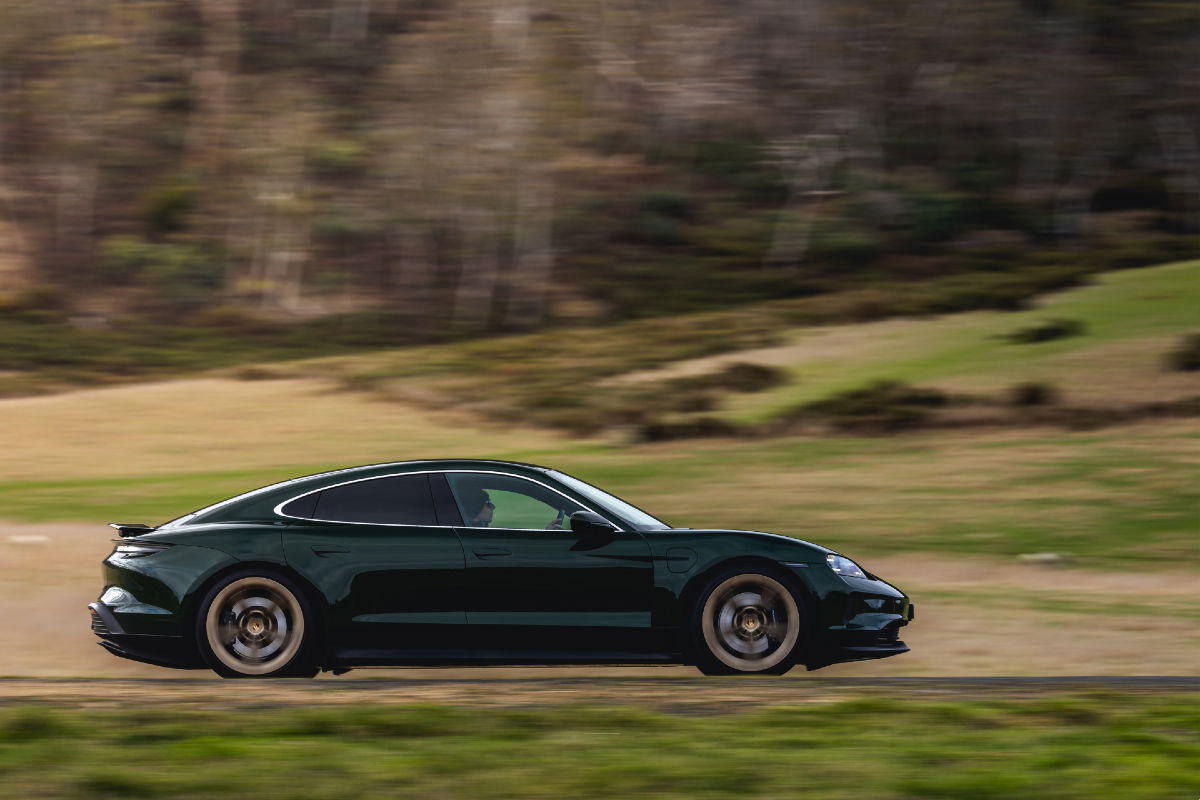
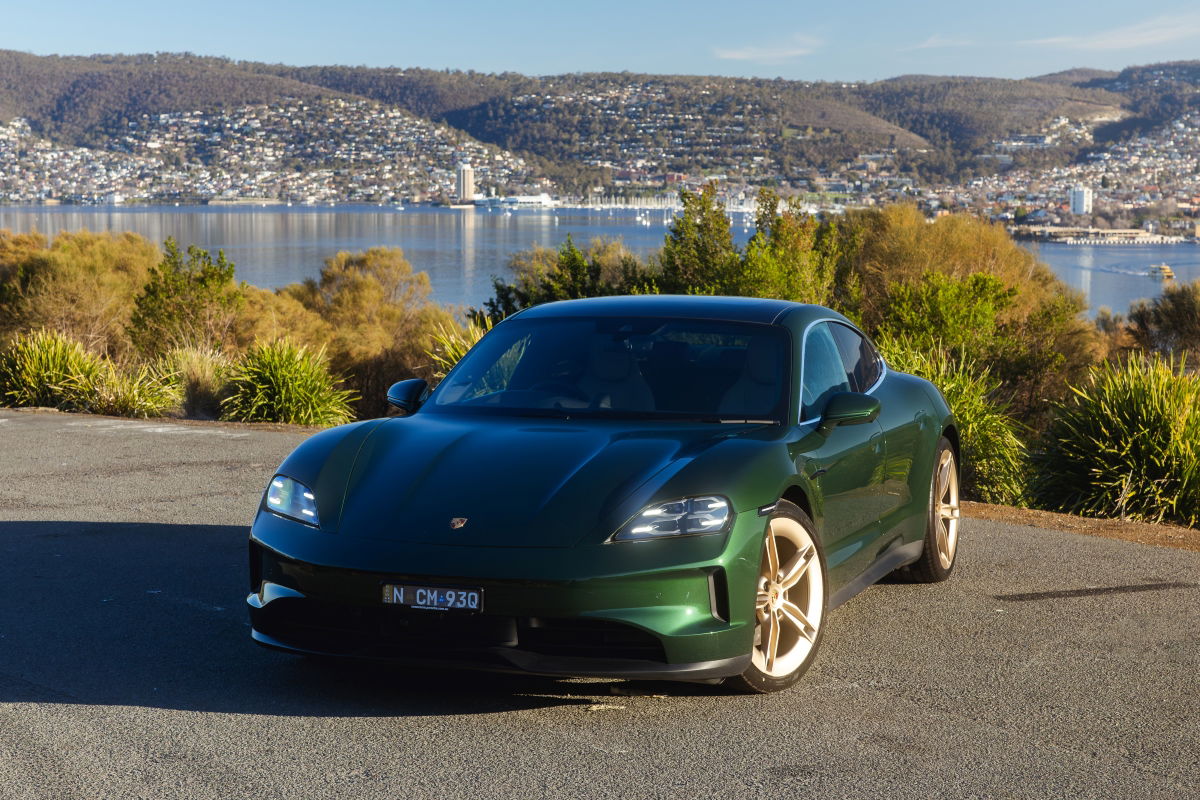
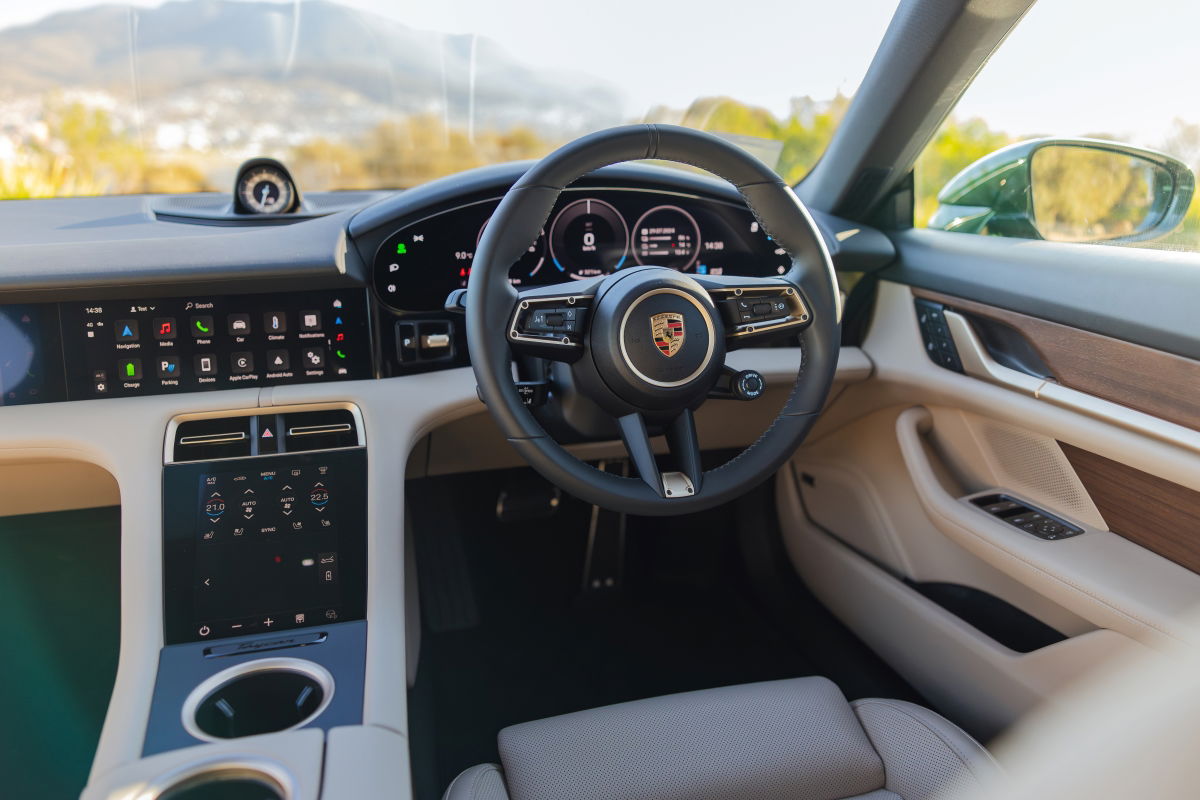
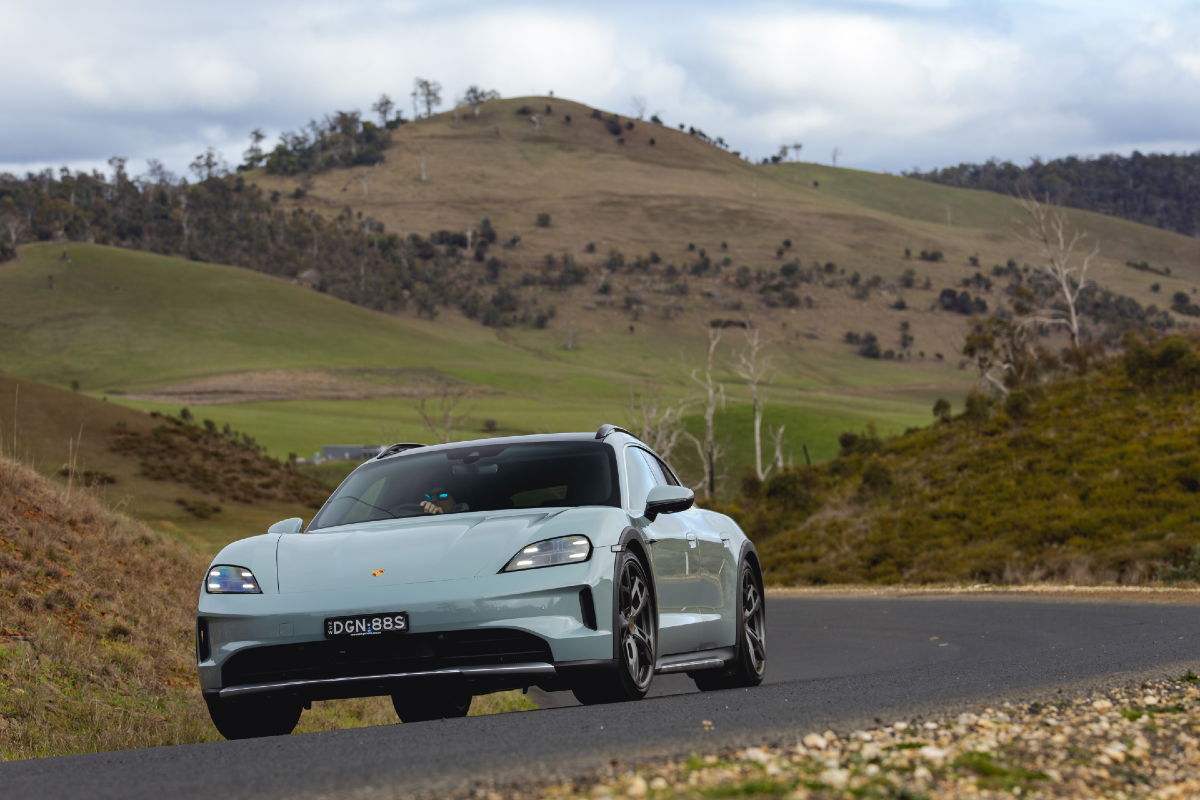
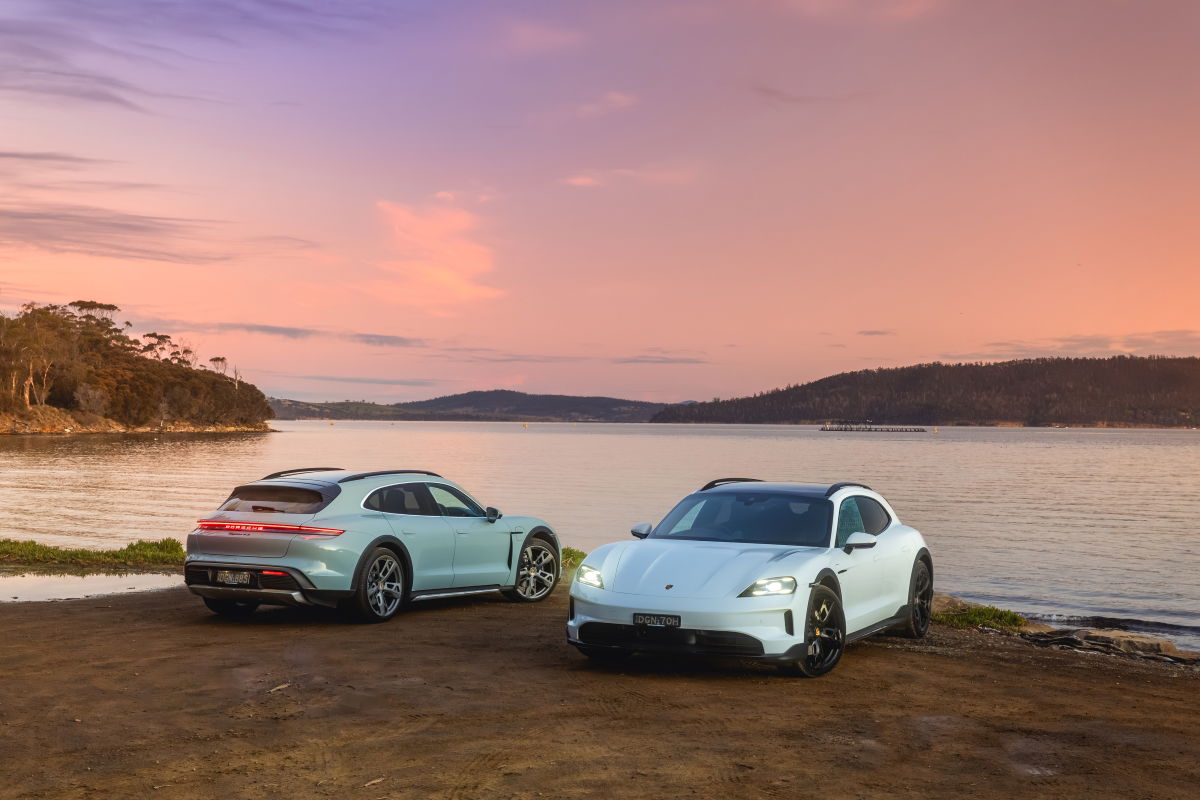
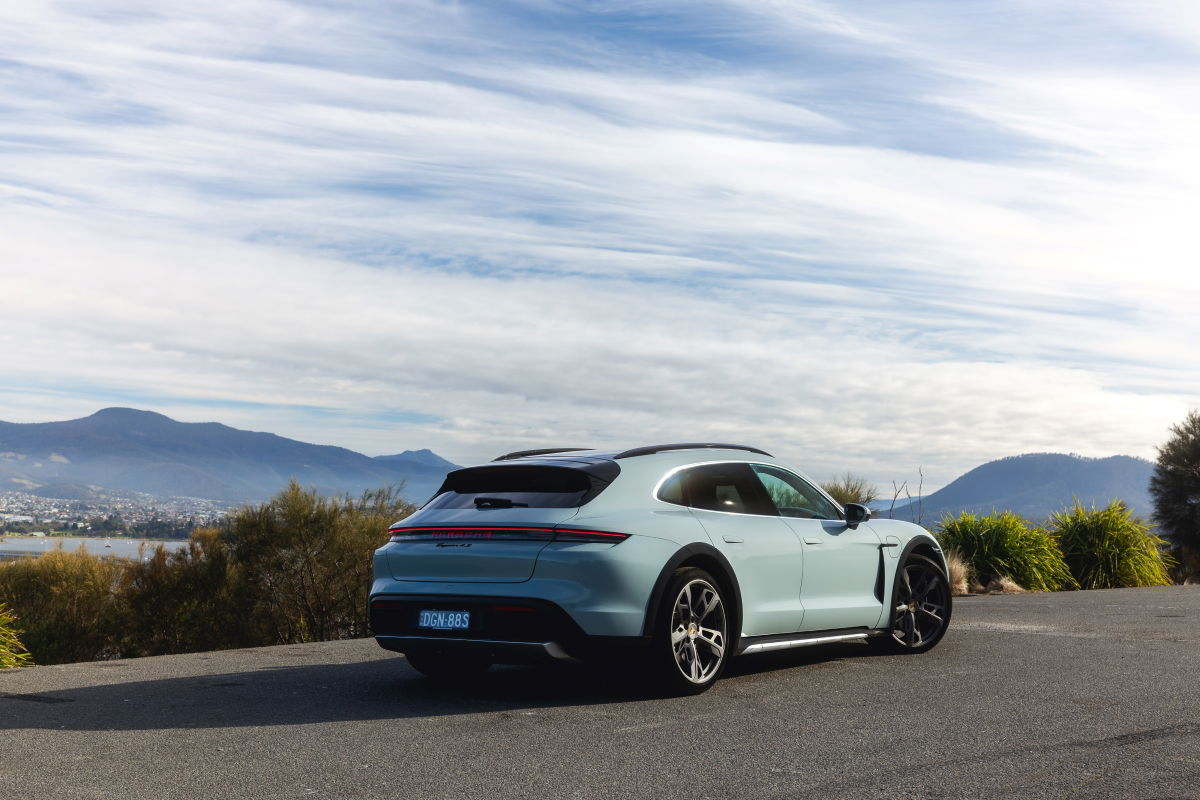









Discussion about this post